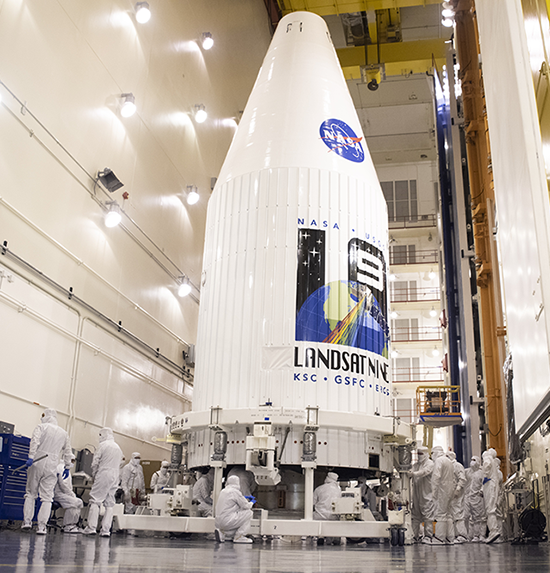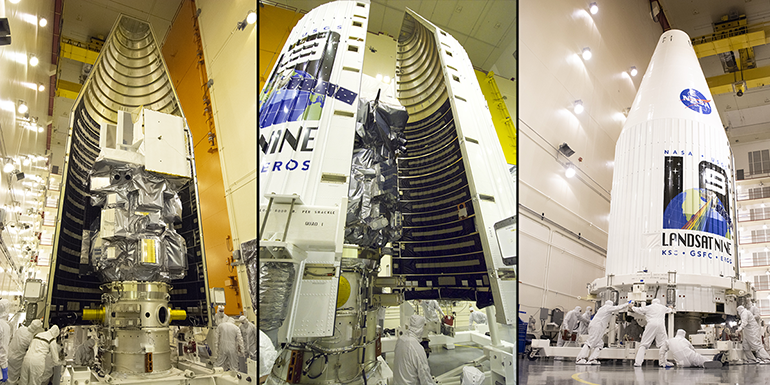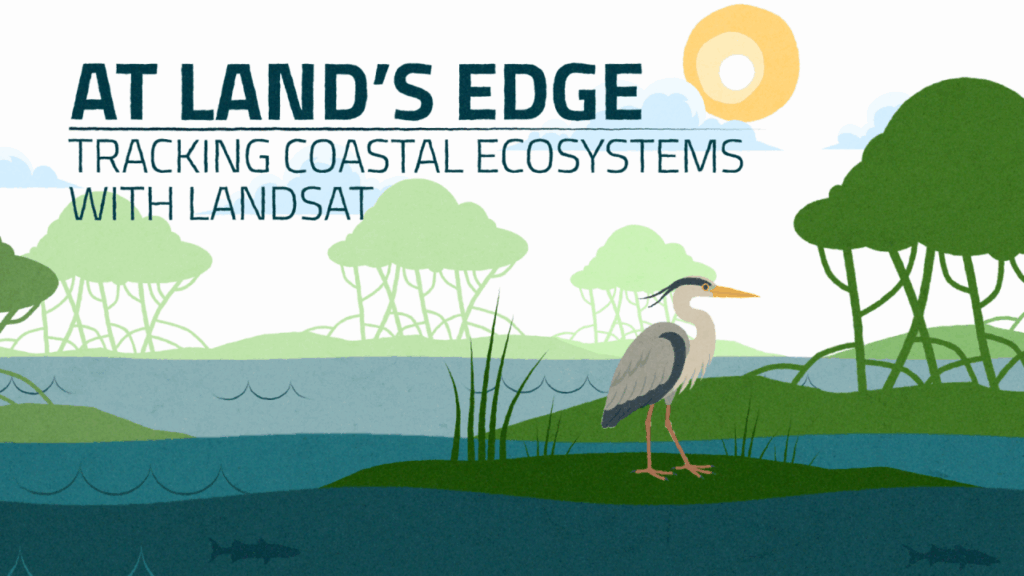By Laura E.P. Rocchio

In preparation for launch, the Landsat 9 observatory has been encapsulated in the fairing of the Atlas V 401 rocket that will deliver it into orbit this September.
The satellite was first attached, or mated, to a ring known as a Payload Adapter. The satellite and adapter were then lifted and stacked on top of the L9 ESPA Flight System (EFS)secondary payload that will launch underneath the Landsat 9 satellite to deploy four small SmallSats after the launch vehicle first releases the Landsat 9 satellite in orbit.
Engineers from Northrop Grumman (the observatory fabricator) and United Launch Alliance (the rocket fabricator) conducted the stacking of the payloads last week at Vandenberg Space Force Base near Lompoc, CA where Landsat 9 is scheduled to launch from.
The mated satellite stack was then sealed in the 4-meter aluminum rocket nosecone that will protect Landsat 9 as it makes its way into low-Earth orbit. (The atmosphere and even specks of dust can be detrimental to a satellite when encountered at rocket speed, so a fairing is an essential element of a launch vehicle.)
Once above the atmosphere, the Landsat 9 observatory will emerge from the fairing when the rocket’s onboard computer initiates fairing jettison, approximately four and a half minutes after launch. This entails cutting of the frangible bolts that connect the fairing halves and then forcibly pushing apart the halves with strong springs. The loose fairing halves, having done their job, will then fall back toward Earth and be burned up in the atmosphere.
The rocket’s single-engine Centaur upper-stage will then propel the unencumbered satellite to its final orbital altitude.
About one hour and twenty minutes after launch, the Centaur will initiate separation of the Landsat 9 observatory from its payload adapter, the final step in the Landsat 9 launch sequence. (Watch Landsat 8 separate from its launch vehicle here.)
The Centaur will then make two engine burns to lower its orbit approximately 100 km in altitude, initiate release of the SmallSats from L9 EFS, and then do a fourth engine burn to direct the Centaur into the atmosphere over the Pacific Ocean.

Landsat 9 is a joint mission of NASA and the U.S. Geological Survey. Landsat 9 is the most advanced satellite in the Landsat series; it will extend the data record of Earth’s land surface that began with the first Landsat satellite in 1972. Landsat’s high-quality scientific data makes multi-decadal time series studies possible, and its data are regularly used for land management efforts around the world.
Landsat 9 launch preparations are managed by NASA’s Launch Services Program (LSP) under the direction of LSP Landsat 9 Mission Manager, Chuong Nguyen.





